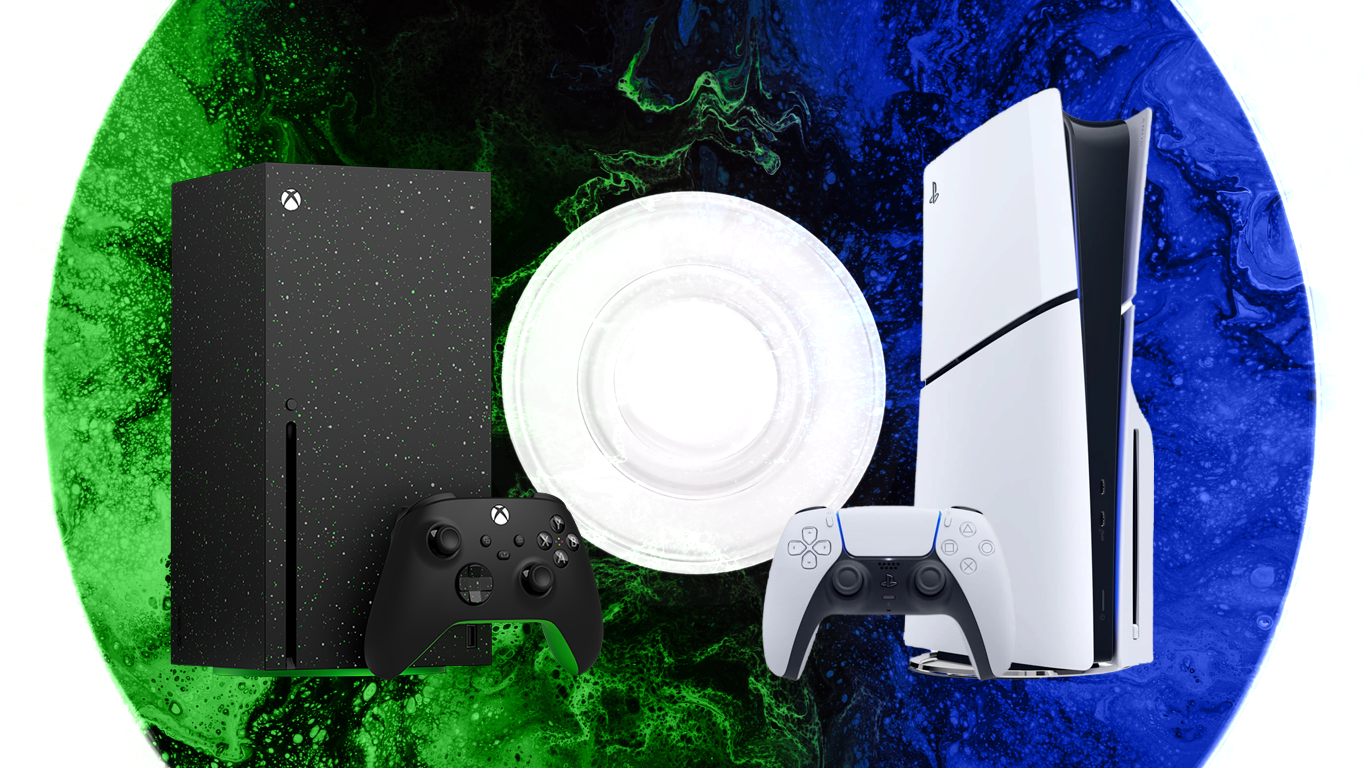The Best Albums For Testing New Speakers and Headphones
When it comes to judging the true quality of speakers or headphones, there’s no better test than listening to music you know well — especially tracks that challenge every part of the sound spectrum. Understanding a device’s specifications — and how they affect your listening experience — can be tricky. That’s why we've linked the audio experience you’re looking for to the specifications that make it possible. Whether you’re confident with tech jargon or not, check for the specs we've listed or use our recommendations on what you should hear to help you understand what good quality sounds like.
This guide is built around iconic albums, featured on Rolling Stone's 'The 500 Greatest Albums of All Time', chosen not just for their artistry but for the way they expose strengths and weaknesses in audio gear. Each album focuses on a specific element — bass depth, tonal balance, dynamic range, spatial imaging, micro-detail, or tonal authenticity — so you can match your listening test to the qualities you value most. If you’re testing your current set-up, cue up these albums on your device and see how it measures up. If you’re left feeling underwhelmed, it might be time for an upgrade.
Frequency balance and equaliser (EQ)
Albums
What you should hear
An even blend of lows, mids, and highs — vocals should be central, cymbals crisp but not harsh, and bass present without dominance. OK Computer is dense yet balanced; Rumours offers harmonies that can reveal tonal imbalance; Blue focuses on vocal intimacy, where any EQ tilt will be obvious. You'll recognise EQ tilt as any shift in the frequency to something brighter or darker. It's always best to test a range of headphones or speakers with the same song to be able to notice these differences, or if it is an intended effect.
Higher-frequency sounds (treble) are where you’ll find clarity, and are a great thing to test. Overly bright treble can cause fatigue as it is too strong and sharp to listen to for an extended amount of time. Dull highs can make music feel closed-in, as if the sound is muffled or flat.
A good system will let you hear distinct bass notes rather than a single, indistinct rumble. Soundstage and imaging are also critical. A high-quality pair of headphones or speakers will place instruments precisely within a three-dimensional space. When all these elements work together, they create a natural, engaging balance that serves the music rather than distracting from it.
Tech specs that matter
- Flat frequency response tuning (studio monitor-style headphones)
- Balanced armature drivers or planar magnetic drivers for precision
- Low impedance (≤32Ω) for consistent performance across devices
Bass and extension
Albums
What you should hear
Bass refers to the lower-frequency sounds. It’s produced by instruments like bass guitars, kick drums, or low synths. When listening, notice the weight and depth of the sound; strong bass often adds warmth and impact to the music. Extension describes how far the sound reaches into the extreme ends of the frequency range, especially at the high and low ends. For extension, listen to how low or high the notes go without distorting or disappearing.
Pay attention to the midrange (mids), where most vocals and instruments live. Vocals should sound natural, not nasal or muffled. For the treble, it should pick up any subtle room reverberation (reverb), but this should always enhance the listening experience. The reverb should not sound distorted or muddy.
The bass should be deep and controlled, without overpowering the rest of the instrumental mix. Kick drums should sound tight, not boomy. In Graceland, listen for the melodic basslines in 'You Can Call Me Al' and 'Diamonds on the Soles of Her Shoes'; in The Miseducation of Lauryn Hill, notice how the bassline anchors the music without clouding vocals; in What’s Going On, the bass is warm yet precise, sitting perfectly in the mix.
Tech specs that matter
- Large dynamic drivers (40mm or above) for better low-end extension
- Low total harmonic distortion (THD) to prevent the bass from sounding muddy
- Frequency response down to at least 20Hz to capture true sub-bass
Dynamic range
Albums
What you should hear
The ability to handle whisper-quiet passages and explosive crescendos without distortion makes for a high quality piece of audio gear and a great listening experience. In Abbey Road, “Come Together” should sound intimate while “The End” should swell without strain. Kind of Blue has gentle trumpet phrases and sudden bursts of energy, and Pet Sounds layers subtle instrumentation with elements you won't want to miss out on due to a lower quality tech product.
Good gear will reveal the subtle room ambience and the interplay between instruments, letting you sense the space of the recording studio. Lower quality products tend to smear these details together, while a great system allows each element to stand out yet blend harmoniously.
Tech specs that matter
- High maximum sound pressure level (SPL) (≥100 dB) to handle peaks
- Good dynamic range (>100 dB) so quiet sounds aren’t lost
- High-resolution audio support (24-bit/96kHz) to avoid compression artefacts
Imaging and stereo separation
Albums
What you should hear
A clear sense of space—you should be able to point to where each instrument is “placed” in the stereo field. Songs in the Key of Life spreads instruments across the mix; A Love Supreme captures live ensemble positioning; Dark Side of the Moon uses panning effects to test precision.
Good speakers or headphones will make these placements feel deliberate and stable, even when the mix gets busy. Additionally, test for imaging stability: as you move your head or change volume, the placement of instruments should remain locked in place, not shift unpredictably.
Tech specs that matter
- Open-back headphone design for natural soundstage
- Low channel crosstalk for accurate left/right separation
- Good phase coherence in drivers for precise instrument placement
Micro-detail and clarity
Albums
What you should hear
Subtle details are where great headphones or speakers distinguish themselves. The finest audio gear will let you hear microtextures—like fingers sliding along guitar strings, the slight intake of breath before a vocal line, or the natural decay of a reverb tail—without you having to strain or turn up the volume. Purple Rain reveals tiny synth flourishes; Highway 61 Revisited has vocal grit and harmonica textures; Hotel California layers guitars with shimmering precision.
Also listen for low-level detail retrieval—quiet background elements like a faint tambourine hit, the soft hum of an amplifier, or room noise that adds realism to the recording. These are often the first casualties of lower-quality gear, which can mask them behind more prominent sounds.
Tech specs that matter
- High sensitivity for better retrieval of low-level detail
- Planar magnetic drivers for fast transient response
- Low noise floor in wired DAC/amp setups
Tonal authenticity and texture
Albums
What you should hear
Natural, believable instrument and vocal tones are the foundation of great sound. Back to Black should sound warm and soulful; Exile on Main St. should feel raw and analogue; Mingus Ah Um should capture the rich, resonant brass and dynamic interplay of Mingus’s ensemble without the horns becoming overly bright or the rhythm section losing definition.
A poor-quality setup might make the brass sound thin and piercing, or conversely, overly soft and muddy. The goal is a sound that preserves the natural harmonic richness and textured character of each instrument.
Tech specs that matter
- Midrange driver accuracy—most human hearing is most sensitive here
- Low total harmonic distortion to keep timbre clean
- Wide frequency response (20Hz–40kHz) for overtones and harmonic richness
Final thoughts
Whether you’re auditioning brand-new gear or evaluating your current set-up, these albums are your sonic checklist for performance. In-store, ask staff if you can run a quick test through their display speakers or with their demo headphones or earphones. Play these tracks and listen for the qualities you care about most to ensure you're investing in the tech that you'll get the best experience from. If one device consistently delivers the sound you’re after, you’ve found your match. The right choice isn’t just about specs — it’s about the way the music moves you.



